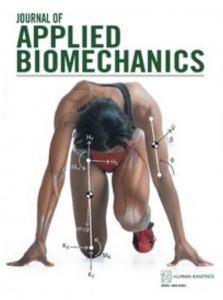Publications

A Comparison of Clinical Spinal Mobility Measures to Experimentally Derived Lumbar Spine Passive Stiffness
Authors: Liana M. Tennant 1, Erika Nelson-Wong 2, Joshua Kuest 2, Gabriel Lawrence 2, Kristen Levesque 2, David Owens 2, Jeremy Prisby 2, Sarah Spivey 2, Stephanie R. Albin 2, Kristen Jagger 2, Jeff M. Barrett 1, James D. Wong 3 and Jack P. Callaghan 1
Affiliations:
- Department of Kinesiology, University of Waterloo, Waterloo, ON, Canada
- School of Physical Therapy, Regis University, Denver, CO, USA
- Department of Mechanical Engineering, Colorado School of Mines, Golden, CO, USA
Journal: Journal of Applied Biomechanics - October 2020, Volume 36, Issue 5 (DOI: 10.1123/jab.2020-0030)
-
Field & Applications:
- Medical
- Musculoskeletal disorder
- Musculoskeletal rehabilitation
- Physiotherapy
Spinal stiffness and mobility assessments vary between clinical and research settings, potentially hindering the understanding and treatment of low back pain. A total of 71 healthy participants were evaluated using 2 clinical assessments (posteroanterior spring and passive intervertebral motion) and 2 quantitative measures: lumped mechanical stiffness of the lumbar spine and local tissue stiffness (lumbar erector spinae and supraspinous ligament) measured via myotonometry.
The authors hypothesized that clinical, mechanical, and local tissue measures would be correlated, that clinical tests would not alter mechanical stiffness, and that males would demonstrate greater lumbar stiffness than females. Clinical, lumped mechanical, and tissue stiffness were not correlated; however, gradings from the posteroanterior spring and passive intervertebral motion tests were positively correlated with each other.
Clinical assessments had no effect on lumped mechanical stiffness. The males had greater lumped mechanical and lumbar erector spinae stiffness compared with the females. The lack of correlation between clinical, tissue, and lumped mechanical measures of spinal stiffness indicates that the use of the term “stiffness” by clinicians may require reevaluation; clinicians should be confident that they are not altering mechanical stiffness of the spine through segmental mobility assessments; and greater resting lumbar erector stiffness in males suggests that sex should be considered in the assessment and treatment of the low back.
Keywords: PIVM, PA-spring, low back, myotonometry, range of motion


